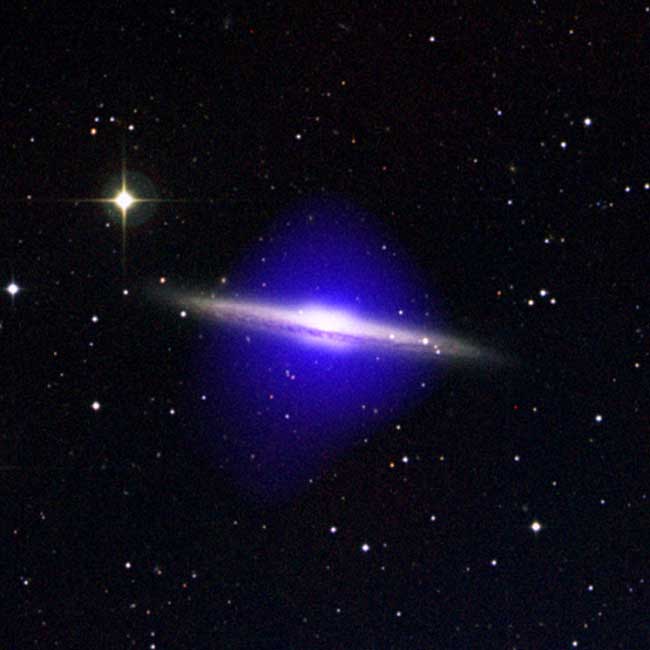
Astronomers have detected a faint halo of hot gas surrounding and falling into a spiral galaxy located 100 million light-years from Earth.
The discovery provides a long-sought missing link in theories of galaxy formation and helps solve the riddle of where galaxies get the fuel they need to create new stars billions of years after they have already formed.
"What we are likely witnessing here is the ongoing galaxy formation process," said study leader Kristian Pedersen of the University of Copehnhagen, Denmark.
The spherical gas halo was found centered on the nucleus of NGC 5746, a spiral galaxy like our own Milky Way. The halo, not visible in optical wavelengths, has a radius of about 60,000 light-years and was detected with NASA's Chandra X-ray Observatory.
Oddly quiet
Scientists also think that galaxies can grow by cannibalizing other galaxies, and recent studies suggest galaxies can be shaped by the activity of massive black holes in their centers.
Compared to our own Milky Way, NGC 5746 is quiet. The galaxy displays no unusual star formation and no energetic activity from its central region. It is therefore unlikely that the detected halo is produced by gas ejected out of the galaxy, which was something astronomers detected in 2001.
Breaking space news, the latest updates on rocket launches, skywatching events and more!
Instead, the researchers believe the galaxy's immense gravity is attracting the gas and shaping it into a spherical halo. The gas falls inward toward the galaxy's central core and fuels the birth of new stars.
The finding supports computer simulations that show galaxies building up gradually from the merger of small hot clouds of intergalactic gas and dark matter. If this theory is correct, then the gas halos enveloping the galaxies should be detectable.
"People suggested that you'd see this gas draining down and radiating its energy as it fell into the galaxy," study co-author Richard Bower of Durham University in England told SPACE.com.
Technology needed
Scientists have been trying for years to detect these halos of infalling gas but have been unsuccessful until now. The researchers credit the discovery of NGC 5746's halo to advances in X-ray technology which have allowed telescopes to detect lower luminosities.
"The halos exist, but are so faint that an extremely sensitive telescope such as Chandra is needed to detect them," Pedersen said.
Without a hot halo of gas, scientists would expect star formation within galaxies to eventually cease.
"If halos didn't exist, it would just be a big coincidence," Bower said. "Why do we just happen to exist in this epoch where galaxies are on the verge of running out of gas? The existence of hot halos that are refueling the galaxy makes that much less of a paradox."
- Cosmologists Stretch to Explain Birth of Galaxies
- Forces of Creation: Black Holes Spark Star Formation
- X-Ray Halo Found Around Galaxy Like Ours
Ker Than is a science writer and children's book author who joined Space.com as a Staff Writer from 2005 to 2007. Ker covered astronomy and human spaceflight while at Space.com, including space shuttle launches, and has authored three science books for kids about earthquakes, stars and black holes. Ker's work has also appeared in National Geographic, Nature News, New Scientist and Sky & Telescope, among others. He earned a bachelor's degree in biology from UC Irvine and a master's degree in science journalism from New York University. Ker is currently the Director of Science Communications at Stanford University.
